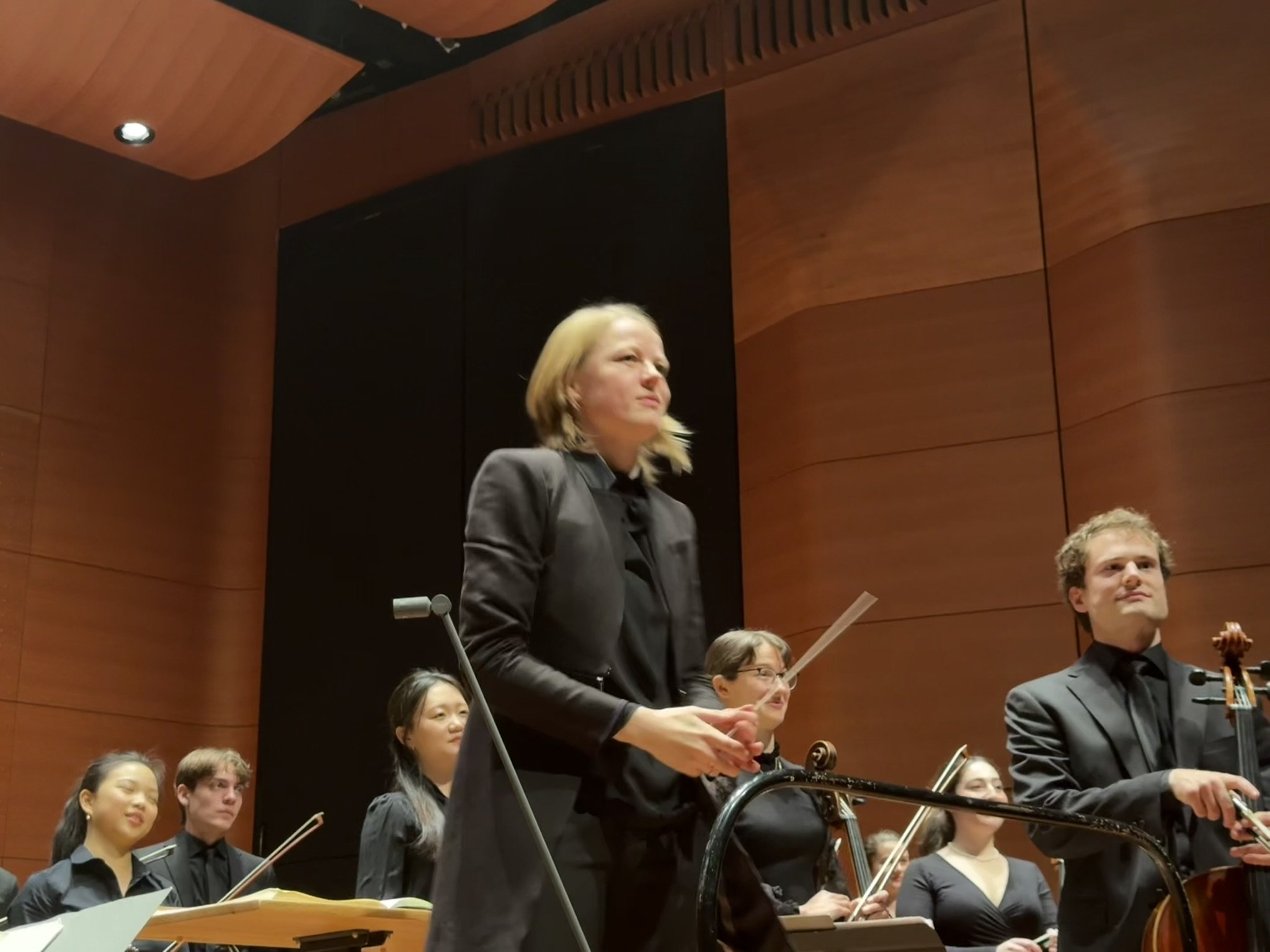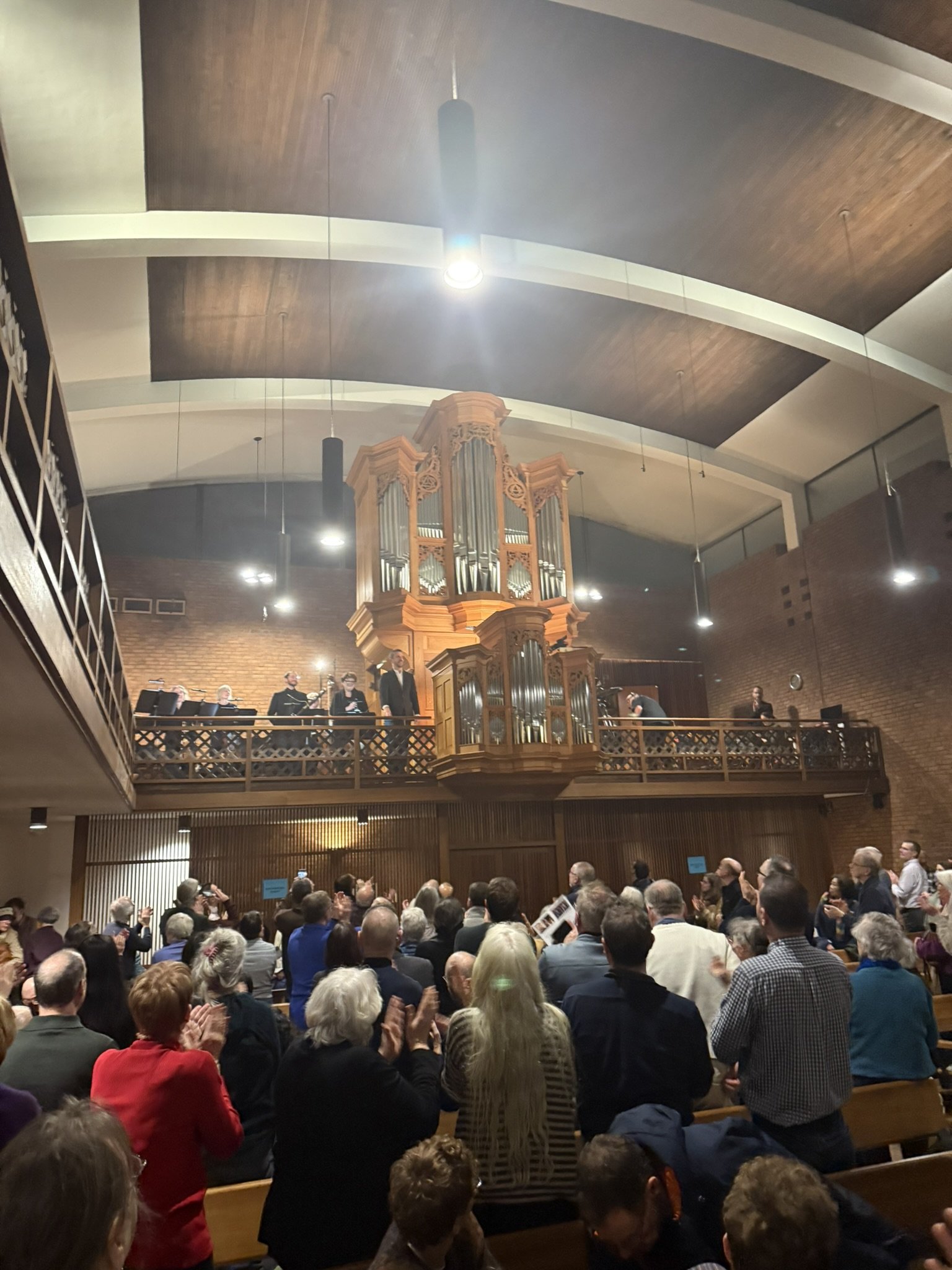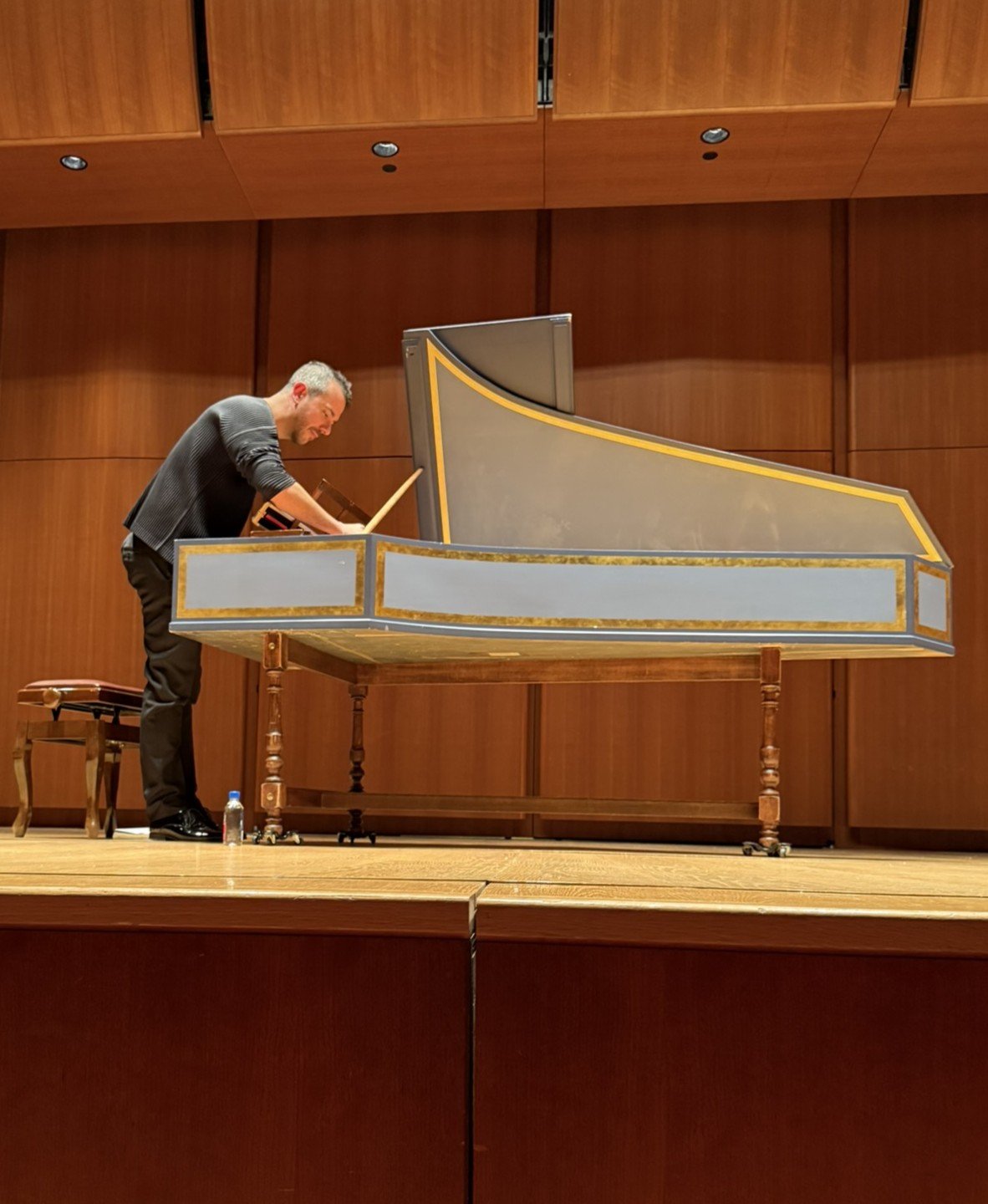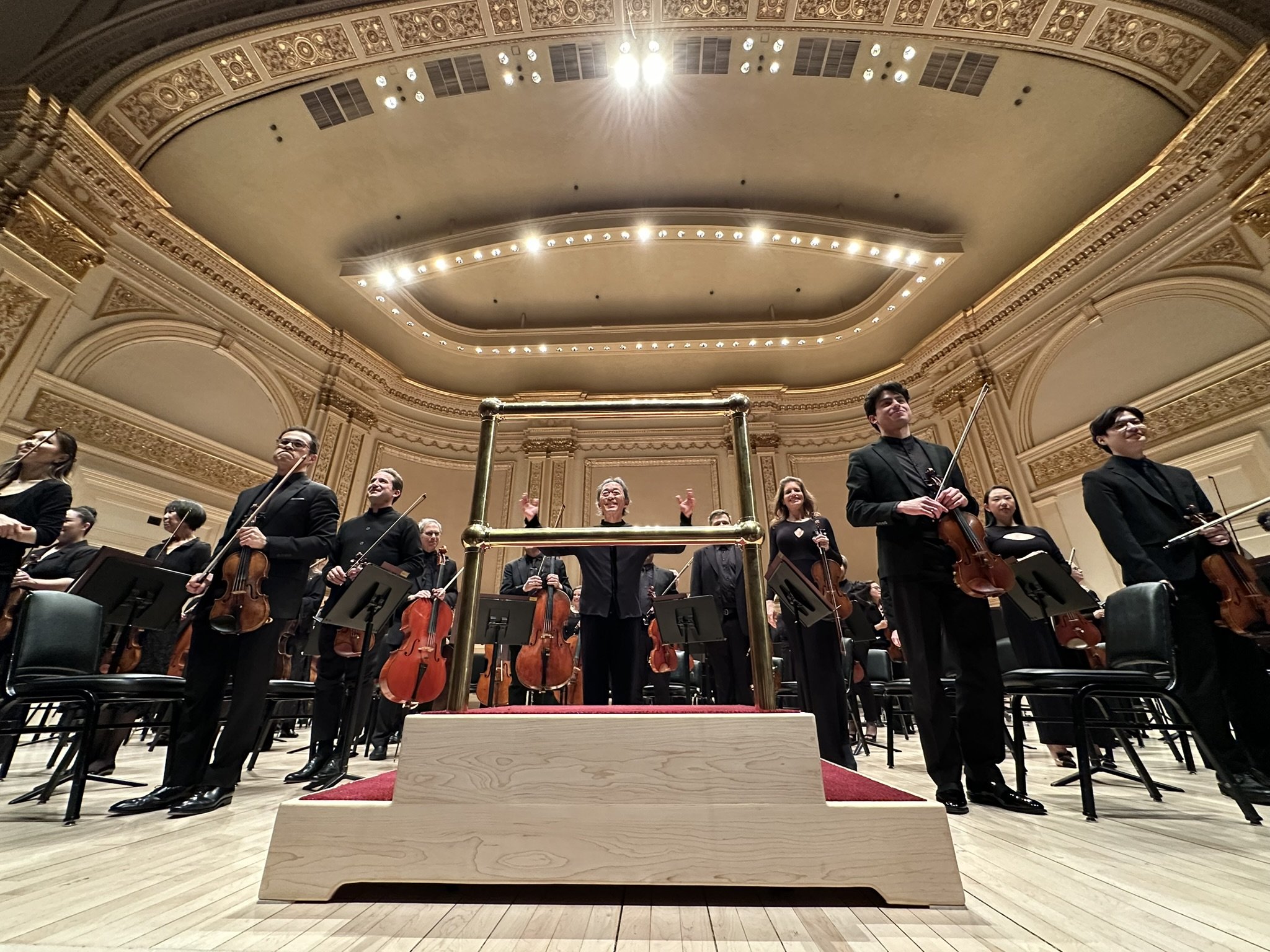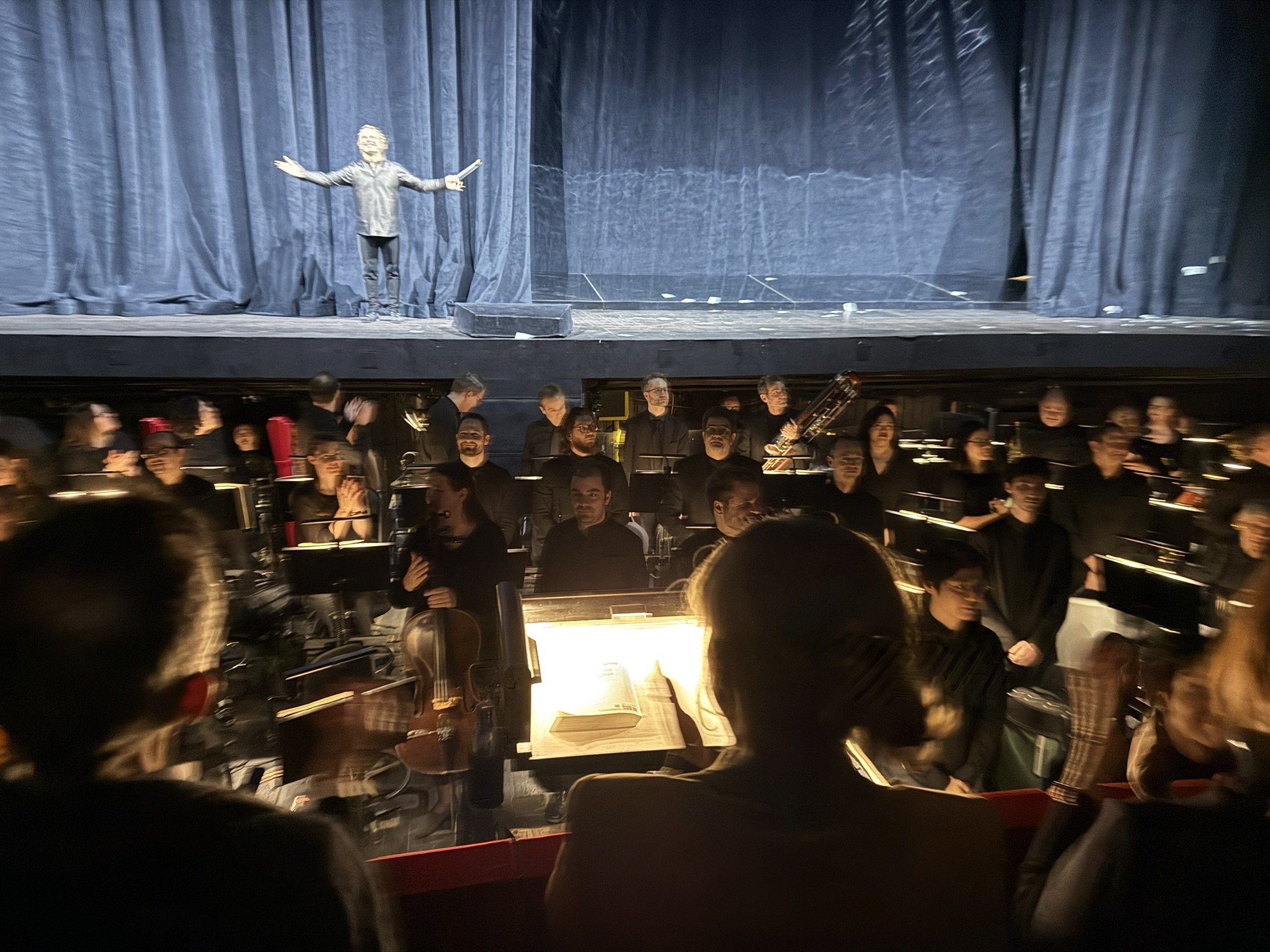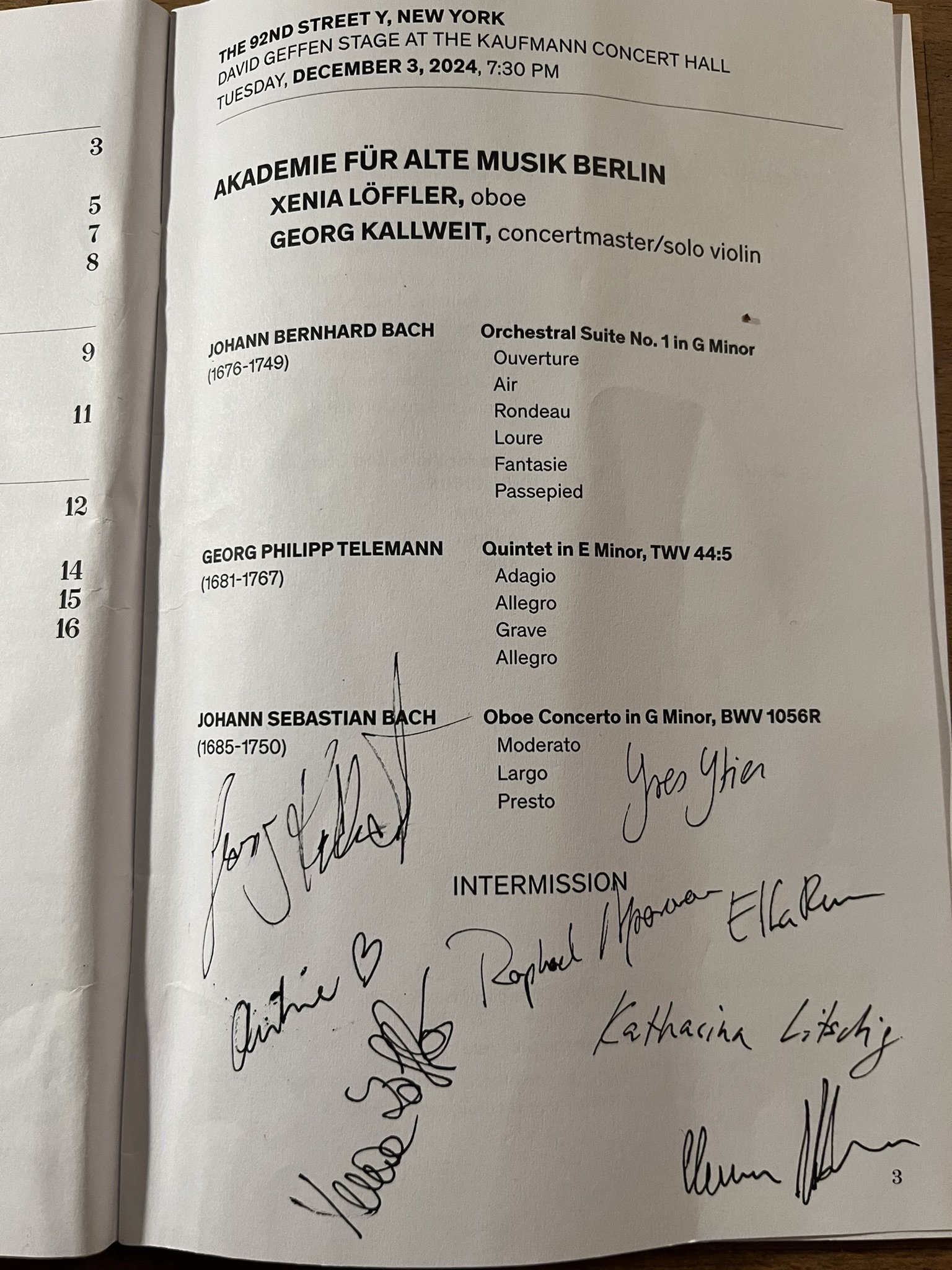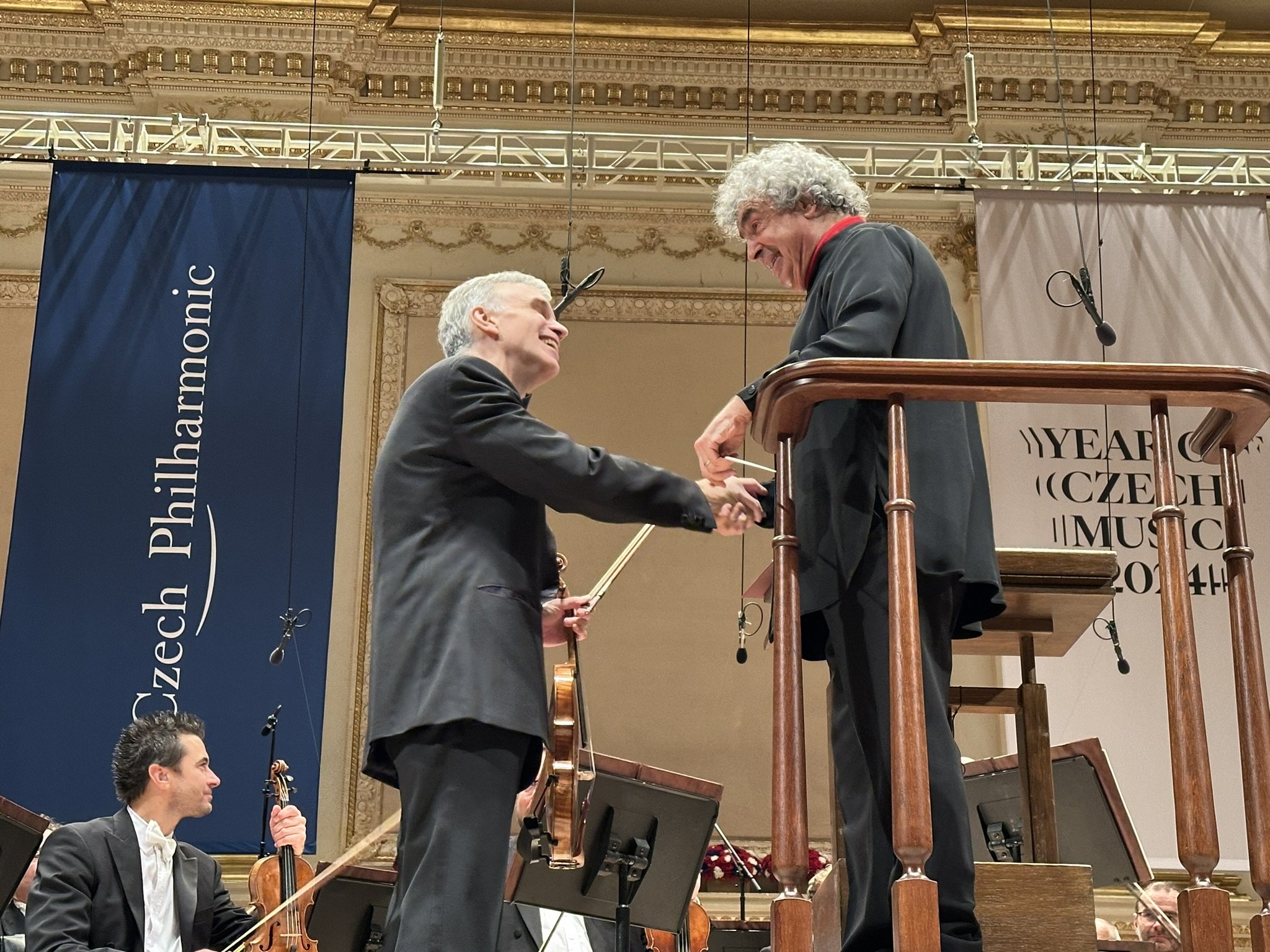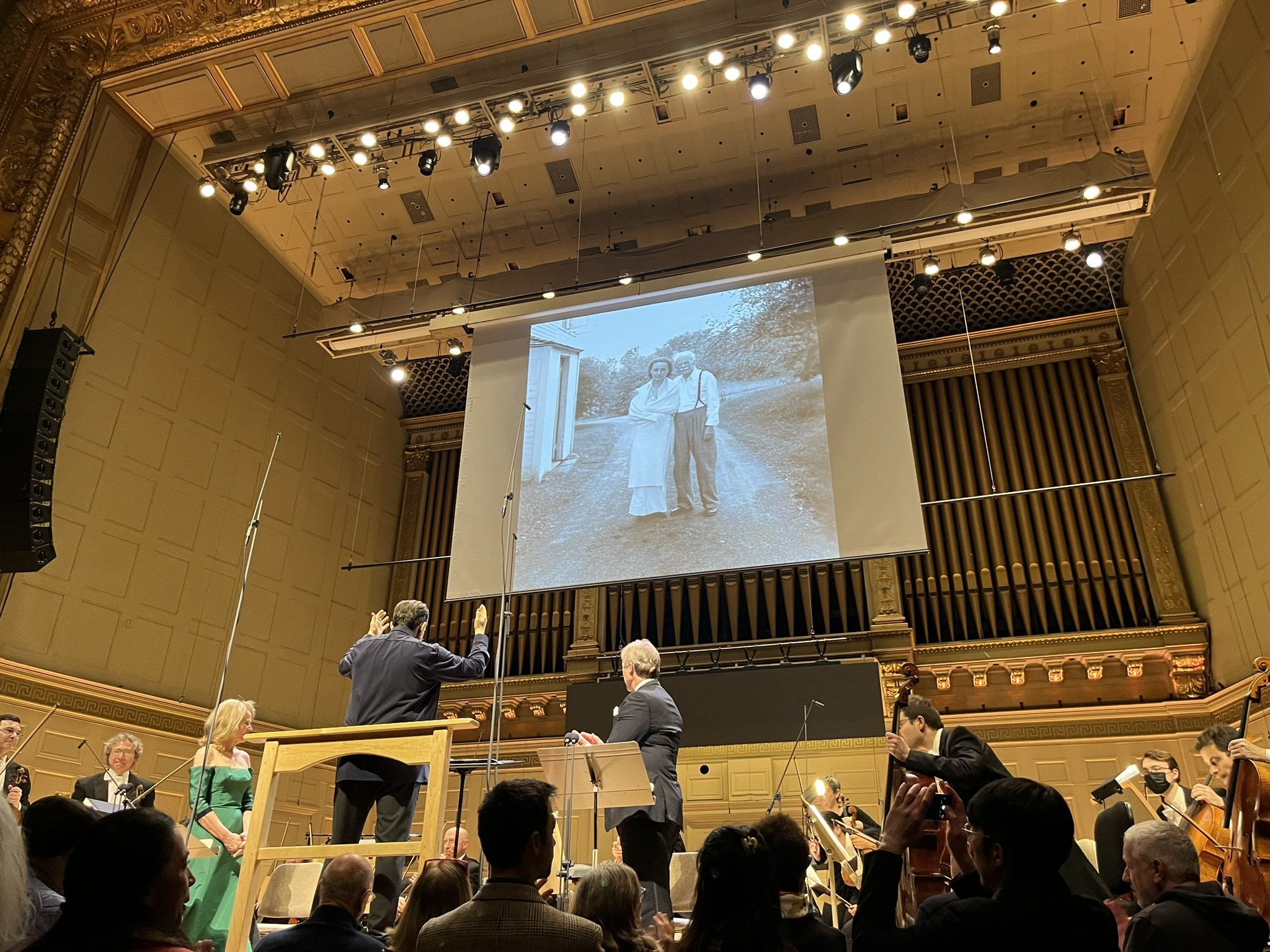The vocal group ekmeles performed Stockhausen’s Stimmung at St. Paul’s Chapel, Columbia University, on Feb 14. Over 70 minutes, six singers explored 51 models, layering hums, whispers, and chants of gods’ names to create elusive overtone fusions. The piece, written in 1968, evokes calming, ever-changing vitality, inspired by Stockhausen’s son’s crib hums, medieval church singing, and his time among Mexican ruins.
Read More2025-2026 Carnegie Hall Concerts
The 2025–2026 season at Carnegie Hall features the Israel Philharmonic Orchestra with Lahav Shani and Pinchas Zukerman, pianist Sir András Schiff, the Estonian Festival Orchestra with Paavo Järvi, the Estonian Philharmonic Chamber Choir with Tõnu Kaljuste, the Philharmonia Orchestra with Marin Alsop and Santtu-Matias Rouvali, accordionist Ksenija Sidorova, the Modigliani Quartet, and violinist Kyung Wha Chung with pianist Kevin Kenner, and more.
Read MoreTheatre of Voices at Carnegie Hall
Founded in 1990 by Paul Hillier, Theater of Voices performed at Zankel Hall, Carnegie Hall. Their uniform, refined, and expressive singing highlighted each piece’s unique character, freeing listeners from familiar musical patterns. Michael Gordon’s A Western, John Luther Adams’ A Brief Descent into Deep Time, and Julia Wolfe’s Italian Lesson were on the program.
Read MoreJuilliard Orchestra Conducted by Ruth Reinhardt
Ruth Reinhardt led the Juilliard Orchestra at Alice Tully Hall, featuring Gaeun Kim’s passionate Martinu cello solo, superb ensemble playing, and Clara Neubauer’s Brahms solo. Reinhardt drew rich tones, creating flow across classical and modern works, offering fresh, engaging interpretations of familiar and new pieces.
Read MoreHandel's Organ Concerti by Corti and the BEMF Chamber Ensemble in Boston
On February 8, Francesco Corti and the BEMF Chamber Ensemble performed Handel’s Organ Concerto at First Lutheran Church, Boston. Corti’s brilliant organ and harpsichord playing evoked Mozart, Beethoven, Brahms, and Mahler, showcasing Handel’s lasting influence. The period sound, expressive passages, and engaged audience made the performance a profoundly moving, communal experience.
Read MoreCorti was fixing the parts of the Harpsicod during his concert
Francesco Corti's Winged Hands in New York
Francesco Corti’s harpsichord at the Morgan Library transformed each piece into a vivid, international journey. From Handel to Bach, his precise, expressive playing evoked orchestral colors, dance, and vocal lines. Ornamented, flowing, and dynamic, the performance revealed music’s timeless charm, bridging eras and stirring imagination.
Read MoreMetropolitan Opera Orchestra's Brahms at Carnegie Hall
The Met Opera Orchestra performed Brahms’ Symphony No. 4 at Carnegie Hall under Myung-Whun Chung. The performance showcased the symphony’s rich interplay of strings and winds, featuring medieval motifs and complex patterns. Dynamic tempos and unified energy brought out Brahms’ romantic depth, with the orchestra’s expressive precision making the music vividly immediate and engaging.
Read MoreMuti and Chicago symphony's Verdi at Carnegie
Riccardo Muti and the Chicago Symphony Orchestra performed Verdi’s rare ballet The Four Seasons at Carnegie Hall, blending vivid orchestral colors with expressive solos. Muti’s touch brought warmth, nostalgia, and lyricism, culminating in Martucci’s heartfelt Notturno. The performance showcased the orchestra’s artistry and cultural depth, leaving a lasting, precious impression.
Read MoreAfter Versus, Patrick Higgins palaced his guiter on the middle of the stage. R.I,P David Lynch 1.16.2025
Patrick Higgins / Sound Planetarium
On a snowy January evening in Brooklyn, Higgins performed his latest work, improvising on electric guitar over electronic, drum, and brass sounds. The 40-minute soundscape shimmered like a twinkling planetarium, blending rough lyricism, nostalgia, and innovation into a vivid, expressive universe from a single guitar.
Read More2025 Met Opera
Now, the Metropolitan Opera is getting in the best shape after James Levine - New excellent principals, outstanding ensembles and solos even in the tutti, rich and precise tuttis, extensive connections to all top artists, and curious audiences (new and old) in the house. The conditions are about time. The lineup for the rest of this season through 2025 is as follows:
Read MoreMetOperaExperience / メトでオペラをみるということ
Opera penetrates your soul's darkness and consumes you, and then the orchestral sounds take it away. Six performances of Strauss's Die Frau ohne Schatten have just finished at the Metropolitan Opera. It's a 4-hour opera, including breaks. Concerts and operas have completely different appeals. Even if you usually experience great sound with headphones or audio, you become part of the work that 3,800 people can experience simultaneously. In a world where people often sacrifice the misfortune of others to achieve their own happiness, Strauss's opera "Saving Her Husband Instead of Self-Sacrifice and Helping Other Unhappy Couples to Become Happy" premiered in 1919, the year after the outbreak of World War I.
Read MoreAsmik Grigorian at Carnegie Hall
Asmik Grigorian and Lukas Geniušas gave a powerful Carnegie Hall recital in a 600-seat underground space. Performing Tchaikovsky and Rachmaninoff, they created intensely dark, personal, and lyrical worlds. Asmik’s rich vocals and Lukas’ commanding piano transformed each song into a confession, earning stormy bravos and a heartfelt, joyous audience response.
Read MoreTon Koopman and New York Philharmonic
Ton Koopman conducted Handel's Messiah with the New York Philharmonic, delivering sharp, vibrant, and precise music-making. His natural, varied tone, superb orchestration, and stellar singers combined to create a magnificent performance. Even in his 80s, Koopman’s energy and timing captivated the audience, making it a memorable live experience.
Read MoreAkademie für Alte Musik Berlin in New York
At 92nd Street Y, the Akademie für Alte Musik Berlin performed Bach and Telemann, bringing timeless humanity to life. Georg Kallweit’s violin and Xenia Löffler’s oboe captivated, while harpsichord ornamentation and ensemble interplay evoked intimate, emotional landscapes. The music revealed Bach’s power to touch the human heart.
Read More100 Years of Czech Music at Carnegie Hall, Bychkov's Glagolitic Mass
Trifonov and the Czech Philharmonic brought Dvořák and Janáček to life at Carnegie Hall. The oboe sang like a bird, the bass turned like a waterwheel, and Janáček’s Glagolitic Mass conveyed passion, homeland, and Slavic spirit.
Read More100 Years of Czech Music, Shaham, Bychkov at Carnegie Hall,
To celebrate the conclusion of the "Czech Music Centennial Year," Bychkov and the Czech Philharmonic appeared at Carnegie Hall. Gil Shaham’s performance of Dvořák’s Violin Concerto was electrifying—brilliant in every solo, flowing seamlessly with the orchestra, like a game of music in motion. Bychkov, still recovering from back surgery, conducted Mahler’s Fifth with heartfelt intensity, drawing a warm, rich sound that mirrored the shifting currents of Mahler’s music. The orchestra’s breathing and awareness brought Prague and Moravia to life in every note. Having heard six orchestras recently, this performance reminded me how profoundly music can challenge and renew one’s own perspective.
Read MoreMet brings Strauss back / Die Frau ohne Schatten
Strauss’s Die Frau ohne Schatten opened at the Met. His fourth collaboration with Hofmannsthal, premiered in Vienna in 1919, the opera is filled with mystery and romance, depicting love and compassion through grand orchestration. Yannick Nézet-Séguin led the orchestra with brilliance, guiding the rapidly shifting expressions with clarity and playfulness. Flute, clarinet, and string solos colored the story, while the orchestra’s collective breath brought Strauss’s music to life. The singers were superb, and in Act II, the cello solo filled the hall with a warm, inviting resonance.
Read Moreコンサートマスター、エシュケナジーのバイオリンソロやトゥッティでバイオリンの箱の中が、コーーーーーーーっと鳴っていた。物凄くすっきりします。
New Titan = Concertgebouw + Mäkelä at Carnegie Hall
The Royal Concertgebouw Orchestra, conducted by Klaus Mäkelä, performed at Carnegie Hall. The same as Jansons’ 2005 program with the Vienna Philharmonic, the pairing of late Schoenberg and the opening of Mahler’s Symphony No. 1 flowed seamlessly. The string ensemble was lively and focused, with an excellent concertmaster solo. In Mahler, Mäkelä’s precise and dynamic conducting brought out the richness of each section, highlighting strings, brass, and solos, culminating in a finale that felt like a hymn to humanity. Mäkelä’s repertoire choices connected present and future audiences, bringing the music to life.
Read MoreRoyal Concertgebouw and Klaus Mäkelä at Carnegie Hall
Klaus returned to Carnegie Hall with the Concertgebouw. Last year’s Paris performance was too unruly to reveal him. How would he meet New York’s standards? His Rattle-like stance showed confidence. I saw early memorable performances under his direction. Opening with a contemporary work on pregnancy and childbirth, he gave a day invaluable for future audiences and composers. The future of Klaus and the Concertgebouw looks bright.
Read MoreBoston Symphony Orchestra and Andris Nelsons
Ten years after Nelsons came to Boston, the Boston Symphony Orchestra performs Mozart with richness. After the pandemic, their performances were deeply satisfying. Following The Abduction from the Seraglio, the audience’s enchanted waiting reflected ten years of Nelsons’ cultivation. Putz’s work sets lovers’ letters to music, with singers performing the words and projections showing letters and photos. Such works could bring classical music closer to daily life, letting fleeting melodies linger in people’s hearts.
Read More



